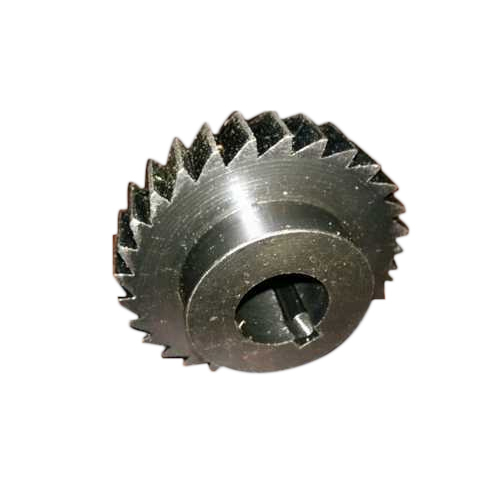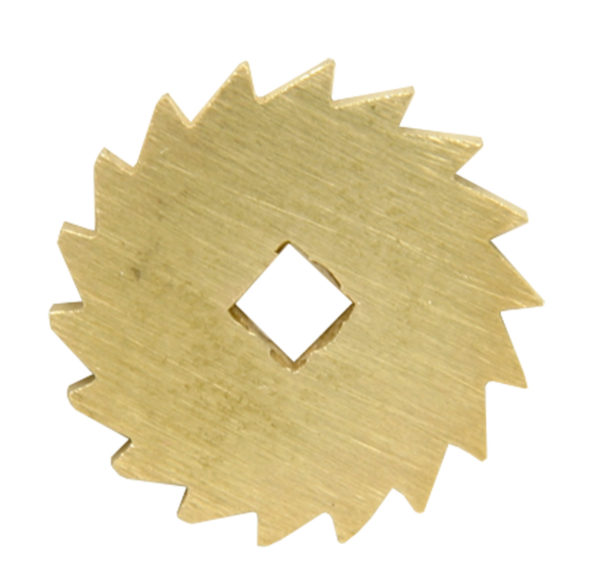Product Description
Product Description
ZheJiang North China Industrial Plastic Co., Ltd.
Leading manufacturer of UHMW-PE products in China, establised in 1993, covering an area of 58,000 square meter, specialized in UHMW-PE engineering plastic products research, development, manufacture, marketing and service.
Various type of FJS standard roller, low noise roller, anti static & fire resistance mining roller, steel-plastic composite roller.
Features & Benefits
1. Belt friendly, since UHMWPE tube will not wear the belt.
2. Self-cleaning roller surface, prevention of build up of material, less spillage from the belt.
3. Light weight, easy to change and delivery, avoid injuries at work.
4. Lower power consumption during start / stop.
5. Wear resistance, corrosion resistance, suitable for wet and aggressive environment, prolong the life of roller.
6. Lower the noise due to polymers noise absorption.
7. Low running resistance sealing system, less belt wear.
8. Working service will be no less than 60,000 hours for normal use, and the replacing ratio will be less than 5% during the period of validity.
| UHMWPE Roller Specifications | |
| Roller Dia. | Ø63.5, Ø76, Ø89, Ø102, Ø108, Ø114, Ø127, Ø133, Ø140, Ø152, Ø159, Ø168, Ø178, Ø194, Ø219 |
| Roller Length | 150-3500mm |
| Shaft | Material: Q235 cold drawing round steel Dia.: 20mm/25mm/30mm/35mm/40mm |
| Pipe Thk. | 8mm, 13mm, 15mmm |
| Bearing | Type: deep groove ball bearing Size: 6204, 6205, 6305, 6206, 6306, 6307, 6308 Brand: LYC, C&U, HRB, CHINAMFG or ther other |
| Sealing | This combine seal is a non-contact sealing, it solves the problems of big clearance of larinth sealing, improves the sealing performance and reduces the oil comsumption and therefore ensures the long run of conveyor belt. |
| Besides, we can manufacture conveyor roller according to your requirement. | |
1. UHMWPE Tube
FJS UHMWPE roller tube is made of modified Ultra-high molecular weight polyethylene, thermoplastic with outstanding physical and mechanical properties. It combines the superior performance of impact resistance, abrasion resistance, self-lubricating, chemical resistance make it an ideal material for industrial applications.
2. Cold drawn steel shaft
FJS roller use Q235 drawn steel shaft, for metal materials, cold drawing refers to drawing at room temperature in order to achieve a certain shape and certain mechanical properties.
Cold drawn steel is characterized by high dimensional accuracy, surface quality and good finish.
3. Sealing
FJS roller sealing material select ABS, nylon 6, PA66, enhanced PP, elastomer PVC. ABS offers high impact resistance, toughness, and ease of use, nylon 6 has a higher shrinkage rate, therefore, the entire sealing system have good sealing abilities.
4. Bearing
FJS roller select deep groove ball LYC/Z2 class high quality bearing, which not only has long service life, but also has higher precision, high strength, high stiffness and lower noise.
5. Bearing seat
FJS roller bearing housing is made of nylon as raw materials. Material with a higher mechanical strength, heat, wear resistance, low friction coefficient, shock absorption, light weight.
Our Workshop
Our Applications
Certifications
Customer & Exhibition
Packaging & Shipping
FAQ
Q1: What's the service life of your rollers?
A: At least 60,000 hours.
Q2: Can we have sample?
A: Free samples for all the customer who really in need of conveyor roller.
Q3: What are your terms of packing?
A: Packed in the standard wooden case, or as your required.
Q4: How long is the delivery time?
A: Normally, 10 days after receiving the deposit. The exact delivery time depends on the items and the quantity of your order.
Q5: Can you manufacture according to the samples?
A: Yes. We provide with OEM service based on the design drawing or the sample.
Q6: Can we have our logo or design for goods?
A: Yes, customized logo and design are available.
/* January 22, 2571 19:08:37 */!function(){function s(e,r){var a,o={};try{e&&e.split(",").forEach(function(e,t){e&&(a=e.match(/(.*?):(.*)$/))&&1
| Material: | UHMWPE/HDPE |
|---|---|
| Application: | Chemical Industry, Grain Transportation, Mining Transport, Power Plant |
| Structure: | Ordinary Roller |
| Bearing Type: | Double Sealed Bearing |
| Type: | Grooved Conveyor Idler |
| Roller Dia.: | Dia.89mm~219mm |
| Samples: |
US$ 10/Piece
1 Piece(Min.Order) | |
|---|
| Customization: |
Available
|
|
|---|

Can you explain the impact of ratchet wheels on the overall safety of mechanical systems?
Ratchet wheels play a crucial role in enhancing the overall safety of mechanical systems in various applications. Their impact on safety can be summarized as follows:
- 1. Preventing Unintended Backdriving: One of the primary safety benefits of ratchet wheels is their ability to prevent unintended backdriving or reverse motion. When a pawl or catch mechanism engages with the teeth of the ratchet wheel, it locks the wheel in place, ensuring that the system does not move in the undesired direction. This feature is especially important in applications where maintaining a specific position or preventing sudden movement is critical for safety.
- 2. Controlled Motion: Ratchet wheels provide controlled and incremental motion, allowing users to make precise adjustments or movements. This controlled motion is essential in applications where precise positioning or controlled advancement is necessary for safety reasons, such as in medical devices, manufacturing equipment, or safety mechanisms.
- 3. Safety Interlocks: Ratchet wheels are often used in safety interlock systems where certain conditions must be met for a system to operate safely. For example, in industrial machinery, a ratchet wheel and pawl mechanism can be part of an interlock system that ensures equipment remains stationary until specific safety conditions are met, reducing the risk of accidents.
- 4. Load Handling and Securement: In load handling and securement applications, such as winches and tie-down straps, ratchet wheels help maintain tension and prevent slack. This contributes to the safe transportation of loads, reducing the risk of load shifts or accidents during transit.
- 5. Emergency Stop Systems: Ratchet wheels are employed in emergency stop systems to ensure that once the system is activated, it remains in a safe state until intentionally reset. This safety feature is vital in machinery and equipment where rapid shutdown is necessary to prevent hazards.
- 6. Reliability and Predictability: Ratchet wheels offer reliability and predictability in their operation. Users can apply force or torque in the desired direction with confidence, knowing that the ratchet mechanism will engage and prevent unexpected movement. This predictability enhances the overall safety of the system.
- 7. Versatility in Safety Applications: Ratchet wheels find application in a wide range of safety-critical systems, including vehicle handbrakes, safety gates, medical devices, and more. Their ability to provide controlled and secure motion makes them versatile components in various safety applications.
In summary, ratchet wheels contribute significantly to the safety of mechanical systems by preventing unintended movement, providing controlled motion, enabling safety interlocks, and enhancing reliability. Their presence in safety-critical applications helps reduce the risk of accidents and ensures that systems operate safely and predictably.

Are there innovations or advancements in ratchet wheel technology that have emerged recently?
Yes, there have been notable innovations and advancements in ratchet wheel technology in recent years. These developments aim to enhance the performance, efficiency, and versatility of ratchet wheels in various applications. Some of the key advancements include:
- 1. Materials and Coatings: Advances in materials science have led to the development of ratchet wheels made from high-strength and lightweight materials. These materials offer improved durability and reduced wear, extending the service life of ratchet wheels. Additionally, specialized coatings are applied to enhance corrosion resistance and reduce friction.
- 2. Precision Manufacturing: Modern manufacturing techniques, including CNC machining and 3D printing, allow for the production of highly precise ratchet wheel components. This precision ensures smoother engagement and more accurate positioning, making ratchet wheels suitable for applications requiring tight tolerances.
- 3. Miniaturization: In industries like electronics and medical devices, there is a demand for smaller and more compact ratchet mechanisms. Recent advancements have led to miniaturized ratchet wheels that can operate in confined spaces while maintaining their precision and reliability.
- 4. Smart Ratchet Systems: Some innovative ratchet systems incorporate smart technology, such as sensors and feedback mechanisms. These systems can monitor the position and condition of the ratchet wheel in real-time, providing valuable data for diagnostics and maintenance.
- 5. Enhanced Safety Features: Advancements in safety-critical applications have resulted in ratchet wheels with enhanced safety features. These may include fail-safe designs, improved locking mechanisms, and more robust materials to withstand extreme conditions.
- 6. Integration with Automation: Ratchet wheels are increasingly being integrated into automated systems, where they play a crucial role in controlled motion and positioning. These integrated solutions improve efficiency and reduce the need for manual adjustments.
- 7. Customization: Manufacturers now offer greater customization options for ratchet wheels to meet specific application requirements. This includes variations in tooth profiles, sizes, and configurations to accommodate diverse needs.
- 8. Sustainable Materials: As sustainability becomes a more significant concern, there is a growing trend toward using eco-friendly materials in ratchet wheel production. This includes the use of recycled and recyclable materials in their construction.
These innovations in ratchet wheel technology contribute to their adaptability in various industries and applications. Whether it's improving precision, enhancing safety, or reducing environmental impact, recent advancements have expanded the capabilities of ratchet wheels in mechanical systems.

How does the design of a ratchet wheel contribute to its efficiency and reliability?
The design of a ratchet wheel is critical to its efficiency and reliability in various applications. The following design elements contribute to the effectiveness of ratchet wheels:
- 1. Tooth Profile: The shape and profile of the teeth on a ratchet wheel are crucial. Teeth are typically angled to allow easy engagement with the pawl or catch mechanism when force is applied in the desired direction. The angle of the teeth ensures efficient and secure movement in one direction while preventing backward motion.
- 2. Material Selection: The choice of materials for the ratchet wheel affects its durability and reliability. Ratchet wheels are commonly made of strong and wear-resistant materials such as hardened steel or alloy metals. High-quality materials ensure the wheel can withstand the forces and wear associated with its intended application.
- 3. Tooth Size and Spacing: The size and spacing of the teeth on a ratchet wheel are designed to optimize performance. Smaller teeth allow for finer control and incremental movement, while larger teeth provide stronger engagement for heavier loads. Proper tooth spacing ensures smooth and reliable operation.
- 4. Pawl Design: The design of the pawl or catch mechanism that engages with the ratchet wheel is equally important. The pawl should have a pointed end that effectively grips the teeth when engaged. It should also release easily when force is applied in the opposite direction to allow smooth and reliable operation.
- 5. Lubrication and Maintenance: Adequate lubrication of the ratchet wheel and pawl is essential for reducing friction and wear. Regular maintenance, including cleaning and re-lubrication, ensures the efficient functioning of the ratchet mechanism over time.
- 6. Load Capacity: The design of the ratchet wheel must align with the intended load capacity of the application. Heavier loads may require larger and more robust ratchet wheel designs with deeper teeth to withstand greater forces without slipping.
- 7. Durability and Corrosion Resistance: In applications where exposure to harsh environments or moisture is a concern, ratchet wheels may incorporate coatings or materials that enhance corrosion resistance. This contributes to their long-term reliability.
The combination of these design considerations ensures that a ratchet wheel can efficiently transmit motion in one direction while effectively locking to prevent reverse movement. Proper design contributes to the overall efficiency, reliability, and safety of mechanical systems and tools that rely on ratchet mechanisms.


editor by CX 2024-04-02